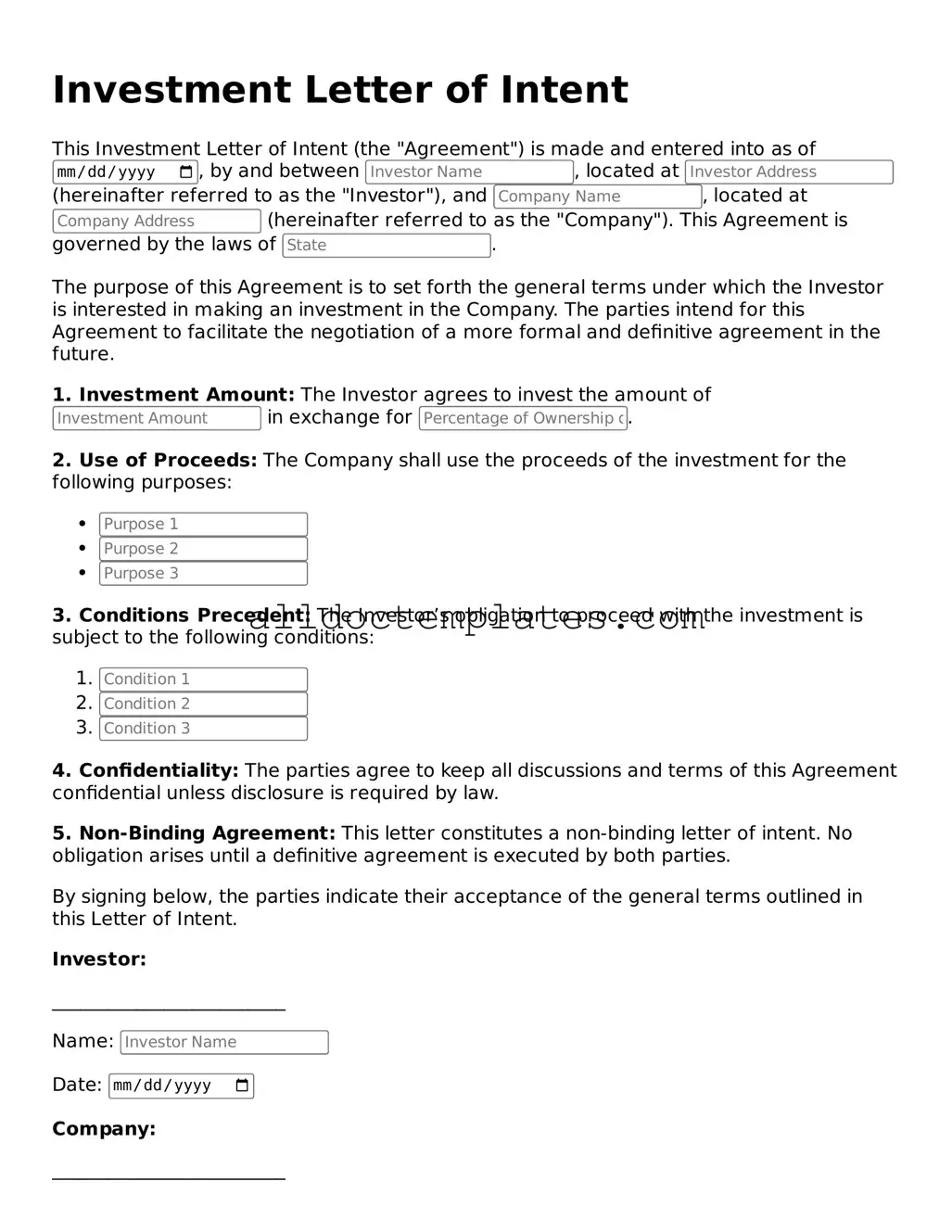Valid Investment Letter of Intent Template
An Investment Letter of Intent form is a document that outlines the preliminary terms and conditions of a potential investment agreement between parties. This form serves as a crucial step in the investment process, helping to clarify the intentions of both investors and companies. By setting the groundwork for negotiations, it can pave the way for a successful partnership.
Get Your Form Now
